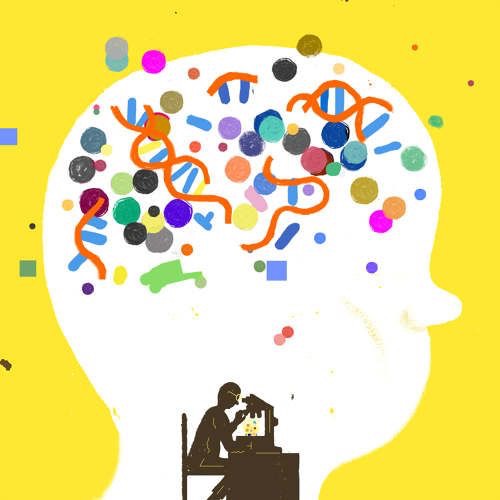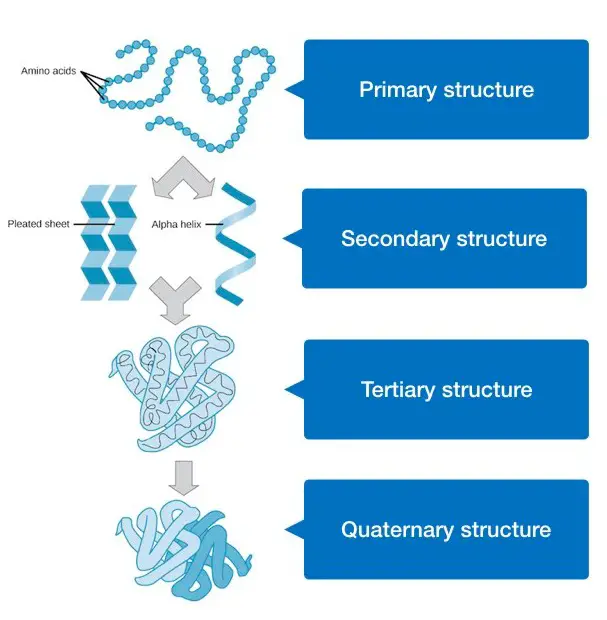“A macromolecule made up of a long chain of amino acids which is an essential part of life on the earth”

Key Topics:
History
Gerhardus Johannes Mulder, a Dutch chemist first discovered the protein in 1837. However, the name protein is given by Berzelius in 1838. Protein is a long chain of amino acids. It was believed that the first biomolecule which was originated on earth was an amino acid.
Structure
“Protein is an important biological molecule which is complex in nature. Depending upon the complicity of protein it is characterised in primary, secondary, tertiary and quaternary structure.”
An amino acid is made up of an amino group (-NH2) and an acidic carboxyl group (-COOH) along with the organic group as a side chain. A long chain of amino acids is joined by a peptide bond and makes a unique protein for a particular biological function.
Both amino and carboxyl groups are attached to a central carbon molecule, an alpha carbon. It is an R group of a side chain that makes each amino acid unique in structure.

Primary structure: It is a simple linear chain of a polypeptide. Different amino acids are joined by peptide bonds. The end of the polypeptide chain is known as N-terminus and C-terminus. The structure is simple and not highly organized.
Secondary structure: It originated due to the folding of polypeptide chains. The most common type of secondary structures is alpha-helix and beta-sheet. The alpha helix structure is like a coil, and the amino acid of one coil is bonded with the amino acid of another coil by a hydrogen bond. It will give stability to the structure.
Beta sheets are arranged parallel to each other and the amino acid of one sheet is attached to an amino acid of another sheet by hydrogen bonds. The hydrogen bond is formed between carboxyl oxygen of one amino acid and hydrogen of another amino acid.
Tertiary structure: It is a three-dimensional arrangement of a polypeptide chain. Here along with hydrogen bonds, several other bonds create complexity in structure. Different types of interaction including non-covalent bonding, ionic interaction and disulfide bonds between the R group of different amino acids, give a three-dimensional structure to protein.
Interestingly, the disulfide bond plays a crucial role in tertiary structure formation. Cysteine is a sulfur-containing amino acid, which is held together by a disulfide bond and it will provide strength to the structure.
Quaternary structure: Subunits of multiple polypeptides are held together in a quaternary structure. It is the most complex form of protein. For example, hemoglobin is made up of an alpha subunit and a beta subunit. Four long chains of amino acids are associated with the non-protein heme group which is prosthetic in nature.
Quaternary structures of the protein are a complex arrangement between protein molecules and other non-protein groups for specific functions.
Read the article: Sex determination
Function of protein
Protein is an important biological molecule, it is involved in almost all types of biological reactions. Enzymes, hormones, receptors, ligands, chaperons, and immunoglobulins all are different forms of proteins.
Additionally, protein works in combination with some other molecules, for example, it interacts with fatty acid and creates important complex molecules for the cell membrane (lipoprotein). Protein is an integral part of all life forms on earth.

